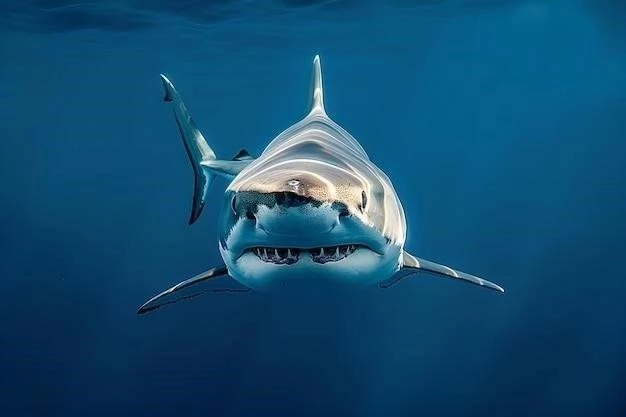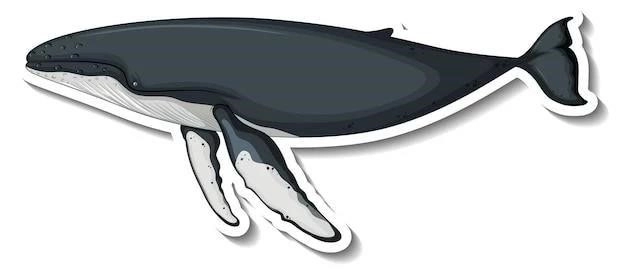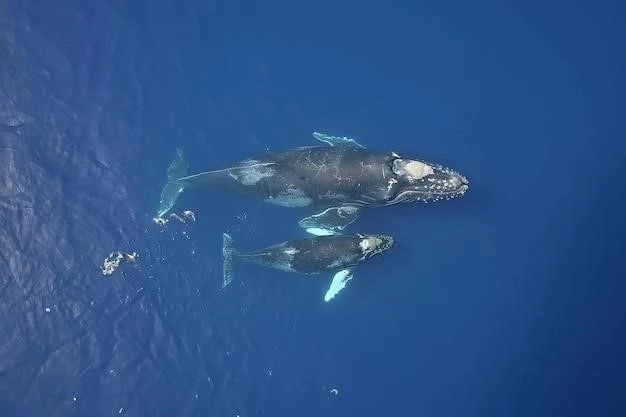The Frilled Shark: A Living Fossil
The frilled shark (Chlamydoselachus anguineus), also known as the lizard shark, is a unique and fascinating creature that inhabits the depths of the ocean. Its primitive features, reminiscent of ancient sharks, have earned it the title of a “living fossil.” This elusive shark possesses a distinctive eel-like body, reaching lengths of up to 6.6 feet, and exhibits a dark brown coloration. The frilled shark’s most striking characteristic is its six pairs of gill slits, which are adorned with frilly margins, giving the animal its common name.
Description and Physical Characteristics
The frilled shark is an extraordinary creature with a truly primeval appearance, often likened to an eel or a sea serpent more than a modern shark. Its scientific name, Chlamydoselachus anguineus, reflects this, with “anguineus” meaning “snake-like” in Latin. They are typically dark brown to gray in color, aiding their camouflage in the depths. Reaching lengths of up to 6.6 feet (2 meters), females are generally larger than males.
The frilled shark’s most distinctive feature, and the source of its common name, is the series of six pairs of gill slits lining its throat. These slits are edged with frilled, fleshy margins that overlap, creating a striking visual effect. Unlike the gill openings of most sharks, which are short and positioned laterally, the frilled shark’s extend almost entirely across its throat, further adding to its unusual appearance.
Its body is elongated and serpentine, with a narrow head and a blunt snout. The eyes are large and lack protective nictitating membranes, suggesting adaptations for low-light conditions. The mouth, in a departure from the typical ventral position of most sharks, is terminal, meaning it is located at the very front of the head. This placement, along with the shark’s jaw structure, is believed to facilitate a swift, snake-like strike at prey.
The frilled shark’s fins are relatively small and set far back on its body. Its single dorsal fin is positioned close to the tail, as are its pelvic and anal fins. This fin arrangement, combined with its flexible body, allows for a sinuous, eel-like swimming style, quite unlike the powerful, side-to-side movements of most sharks. Its tail fin, or caudal fin, is heterocercal, meaning the upper lobe is larger than the lower lobe, a feature common in more ancient shark lineages.
The frilled shark’s dentition is another aspect of its anatomy that reflects its ancient lineage and predatory prowess. Its teeth are small, numerous, and remarkably similar in shape, unlike the differentiated teeth found in many modern sharks. Each tooth has three slender, needle-sharp cusps, perfectly designed for snagging and holding onto soft-bodied prey like squid and fish.
This unique combination of primitive and specialized physical characteristics makes the frilled shark a captivating subject of study for scientists seeking to understand the evolution and diversity of sharks throughout history.

Habitat and Distribution
The frilled shark, a creature of the deep, inhabits a realm shrouded in darkness and mystery. Its distribution spans across vast stretches of the Atlantic and Pacific Oceans, favoring the dimly lit waters of the outer continental shelf and the upper continental slope. Thriving at depths ranging from 50 to 1,500 meters (160 to 4,920 feet) or more, this elusive species prefers environments characterized by low temperatures and high pressure.
While frilled sharks demonstrate a global distribution, encounters with these enigmatic creatures are exceedingly rare. This rarity, coupled with their preference for deep-water habitats, makes studying their behavior and ecology a significant challenge. Sightings and captures have been documented in various locations worldwide, including the waters off the coasts of Japan, Australia, New Zealand, South Africa, and parts of Europe and North America.
The frilled shark’s preference for the mesopelagic and bathypelagic zones, characterized by their perpetual twilight or complete darkness, suggests adaptations for a life largely hidden from human observation. These depths, with their limited food resources and harsh conditions, have shaped the frilled shark’s evolutionary trajectory, resulting in its unique physical characteristics and feeding strategies.
Within its preferred habitat, the frilled shark exhibits a pattern of diel vertical migration, ascending to shallower depths at night to forage for food. This behavior likely reflects the movements of its prey, which also migrate vertically in response to light availability and food sources. During daylight hours, the frilled shark retreats to greater depths, perhaps seeking refuge from predators or conserving energy in the colder, darker waters.
The frilled shark’s distribution, though widespread, remains poorly understood due to the challenges inherent in studying deep-sea environments. Ongoing research efforts, utilizing advanced technologies like remotely operated vehicles (ROVs) and deep-sea submersibles, hold the promise of revealing further insights into the habitat preferences, distribution patterns, and ecological role of this captivating and ancient shark species.
Diet and Feeding Strategies
The frilled shark’s diet and hunting strategies are as fascinating and unusual as its physical characteristics, reflecting adaptations to the challenging environment it inhabits. In the depths where it resides, food can be scarce and competition fierce, necessitating efficient predatory tactics. Analysis of stomach contents from captured frilled sharks reveals a diet primarily composed of cephalopods, especially squid, which make up a significant portion of their prey. These soft-bodied creatures are abundant in the deep sea and provide a readily available food source for the frilled shark.
However, the frilled shark is not a picky eater and exhibits opportunistic feeding behavior, consuming a variety of prey items depending on availability. In addition to squid, its diet includes bony fish, such as lanternfish and other deep-sea species, as well as smaller sharks and even the occasional seabird that ventures too far from the surface. This dietary flexibility likely contributes to the frilled shark’s survival in an environment where food resources can be unpredictable.

The frilled shark’s elongated body and flexible jaws are uniquely suited for capturing and swallowing prey in the deep sea. Its teeth, while small, are numerous and needle-sharp, ideal for grasping and holding onto slippery prey like squid. The shark’s jaw structure allows for an impressive gape, enabling it to consume prey surprisingly large in proportion to its body size. Observations of captured frilled sharks suggest they can consume prey up to half their own length.
While the exact hunting methods of the frilled shark remain somewhat elusive due to the challenges of observing these deep-sea predators in their natural habitat, scientists have proposed several theories based on their anatomy and prey type. One theory suggests that the frilled shark uses its serpentine body to launch itself at prey with surprising speed and agility, similar to the strike of a terrestrial snake. The shark’s backward-pointing teeth ensure a secure grip on captured prey, preventing escape.
Another theory proposes that the frilled shark may utilize a suction feeding technique, similar to that employed by some other deep-sea creatures. By rapidly expanding its throat and buccal cavity, the shark could create a suction force that draws prey into its mouth. This method would be particularly effective for capturing smaller fish and squid in the water column.
Further research is needed to fully unravel the mysteries of the frilled shark’s feeding strategies, but its unique adaptations and opportunistic feeding behavior clearly contribute to its success as a predator in the depths of the ocean.
Reproduction and Life Cycle
The frilled shark, a denizen of the deep, possesses a reproductive strategy as intriguing and unusual as its ancient lineage. Unlike many shark species that rely on oviparity (laying eggs) or viviparity (live birth with placental nourishment), the frilled shark exhibits ovoviviparity. This fascinating reproductive mode combines aspects of both strategies, with embryos developing inside eggs within the mother’s body, sustained by a yolk sac, and hatching internally before being birthed as live young.
Frilled sharks exhibit one of the longest gestation periods known among vertebrates, estimated to be around 3.5 years. This remarkably lengthy gestation period is attributed, in part, to the cold, deep-water environments they inhabit, where metabolic processes occur at a slower rate. During this extended pregnancy, female frilled sharks nourish their developing embryos solely through yolk sacs within the eggs, providing a finite amount of nutrients for their offspring’s growth.
Litter sizes for frilled sharks are relatively small, typically ranging from 2 to 15 pups, with an average of 6. The size of the litter can vary depending on factors such as the mother’s size, age, and environmental conditions. Upon hatching from their eggs within the mother’s body, the pups are essentially miniature versions of their parents, measuring around 40 to 60 centimeters (16 to 24 inches) in length. These fully developed pups emerge ready to navigate the challenges of their deep-sea environment, though their early life history remains largely a mystery.
Due to the depths at which frilled sharks reside and the challenges of observing them in their natural habitat, information regarding their mating behavior and pupping grounds is limited. Scientists believe that mating likely occurs in deeper waters, with females potentially storing sperm for extended periods until conditions are favorable for fertilization and embryonic development.
The reproductive strategy of the frilled shark, characterized by ovoviviparity, a remarkably long gestation period, and small litter sizes, reflects adaptations to its deep-sea environment. This unique combination of reproductive traits contributes to the species’ survival in a habitat where resources are limited and environmental conditions are challenging. Further research is crucial to unravel the mysteries surrounding the frilled shark’s reproduction and life cycle, providing valuable insights into the evolution and conservation of this captivating and ancient species.

Behavior and Social Structure
The frilled shark, a solitary denizen of the deep, remains an enigma in terms of its behavior and social interactions. The challenges inherent in observing these elusive creatures in their natural habitat, the deep ocean, have left scientists with limited insights into their social dynamics. However, based on observations of captured individuals and their sparsely distributed populations, researchers have pieced together a tentative understanding of the frilled shark’s behavioral patterns.
Evidence suggests that frilled sharks are primarily solitary creatures, spending much of their lives navigating the depths alone. This solitary nature is not uncommon among deep-sea predators, as the vastness and low prey densities of their environment often necessitate independent foraging strategies. Encounters between frilled sharks, therefore, are likely infrequent and primarily driven by the pursuit of mates or, on rare occasions, competition for food resources.
The frilled shark’s elongated, eel-like body and flexible jaw structure suggest a hunting style characterized by stealth and agility. They are not built for speed or sustained pursuit but rather for ambushing prey in the dimly lit depths. Their large eyes, adapted for low-light conditions, likely play a crucial role in detecting prey in the darkness. Observations of captured frilled sharks suggest they may also rely on electroreception, using specialized organs to detect the faint electrical fields generated by other organisms, to navigate and locate prey in their lightless environment.

Little is known about the frilled shark’s reproductive behavior. The extended gestation period and ovoviviparous reproductive mode, where eggs hatch internally, suggest that females invest significant time and energy in their offspring. Whether mating involves elaborate courtship rituals or simply opportunistic encounters between individuals remains a subject of speculation. Similarly, the social interactions among juveniles, if any, are unknown.
Unraveling the mysteries of the frilled shark’s behavior and social structure will require innovative approaches and advanced technologies capable of penetrating the depths where they reside. As our understanding of these enigmatic creatures grows, we gain valuable insights into the remarkable adaptations and survival strategies employed by life in the deep ocean, one of Earth’s most unexplored frontiers.

Evolutionary History and Fossil Record
The frilled shark, often hailed as a “living fossil,” occupies a unique position in the evolutionary history of sharks, bearing striking resemblances to ancient ancestors that swam the world’s oceans millions of years ago. Its lineage traces back to the Late Cretaceous period, with fossil evidence suggesting that frilled shark-like creatures existed as far back as 80 million years ago. This remarkable longevity, spanning epochs of profound geological and biological change, has captivated scientists and fueled a fascination with their place in the grand tapestry of shark evolution.

The frilled shark’s primitive morphology, particularly its eel-like body, terminal mouth, and distinctive gill structure, sets it apart from most modern sharks and points to a time when these features were more prevalent among shark lineages. Fossil evidence reveals a close relationship between the frilled shark and other extinct shark groups, such as the Cladoselachiformes, which flourished during the Devonian period, some 400 million years ago. These ancient sharks shared similar physical characteristics with the frilled shark, including a cartilaginous skeleton, multiple gill slits, and a streamlined body plan adapted for swimming in open water.
The frilled shark’s fossil record, though fragmented and incomplete, provides tantalizing glimpses into its evolutionary journey. Fossil teeth, vertebrae, and other skeletal elements attributed to frilled sharks or their close relatives have been unearthed in various parts of the world, including North America, Europe, Africa, and New Zealand. These fossil discoveries offer clues about the ancient distribution, habitat preferences, and even potential prey items of these ancient sharks.

Despite their long evolutionary history, frilled sharks have remained remarkably unchanged in their morphology and ecological niche, suggesting that their adaptations have proven remarkably successful over vast stretches of geological time. Their persistence in deep-sea environments, relatively sheltered from the dramatic environmental shifts that have shaped life in shallower waters, likely contributed to their evolutionary resilience.
As scientists delve deeper into the fossil record and employ advanced genetic analysis techniques, our understanding of the frilled shark’s evolutionary history will continue to be refined. These ongoing investigations hold the promise of unraveling the mysteries surrounding the origin, diversification, and remarkable persistence of this captivating and ancient shark lineage, providing invaluable insights into the evolution of marine life over millions of years.
Conservation Status and Threats
The frilled shark, a creature of the deep with an ancient lineage, faces an uncertain future. Its conservation status, like many deep-sea inhabitants, remains shrouded in uncertainty due to the challenges of studying their populations in their remote and often inaccessible habitats. The International Union for Conservation of Nature (IUCN) currently classifies the frilled shark as “Least Concern” on its Red List of Threatened Species, citing its wide distribution and the lack of evidence for significant population declines. However, this designation should not be misinterpreted as an indication of abundance or a lack of threats.
The very nature of the frilled shark’s existence, dwelling in the depths of the ocean, makes it inherently vulnerable to human activities that extend into these fragile ecosystems. One significant threat stems from deep-sea fishing practices, particularly those targeting deep-water species like orange roughy and grenadiers. Frilled sharks, with their slow reproductive rates and long gestation periods, are highly susceptible to overfishing as bycatch in these fisheries. Accidental capture in fishing gear, particularly bottom trawls and gillnets, can result in injury or mortality, potentially impacting already sparsely distributed populations.
Climate change presents another looming threat to the frilled shark’s long-term survival. As ocean temperatures rise and water chemistry changes due to increasing carbon dioxide levels, the delicate balance of deep-sea ecosystems may be disrupted. Shifts in prey availability, oxygen levels, and other environmental factors could have profound impacts on the frilled shark’s ability to thrive in these changing conditions.
Addressing the conservation challenges facing the frilled shark requires a multi-faceted approach, rooted in scientific research and international cooperation. Enhanced monitoring programs, utilizing advanced technologies like remotely operated vehicles (ROVs) and deep-sea cameras, are essential for gathering data on population trends, distribution patterns, and the potential impacts of human activities on these elusive creatures. Implementing sustainable fishing practices, such as reducing bycatch through modified gear and establishing marine protected areas in critical habitats, can help mitigate the risks associated with deep-sea fisheries.
Ultimately, the fate of the frilled shark rests on our collective commitment to safeguarding the health and integrity of our oceans. Through continued research, responsible management, and a deep respect for the delicate balance of marine ecosystems, we can strive to ensure that this remarkable and ancient species continues to grace the depths of our planet for generations to come.










